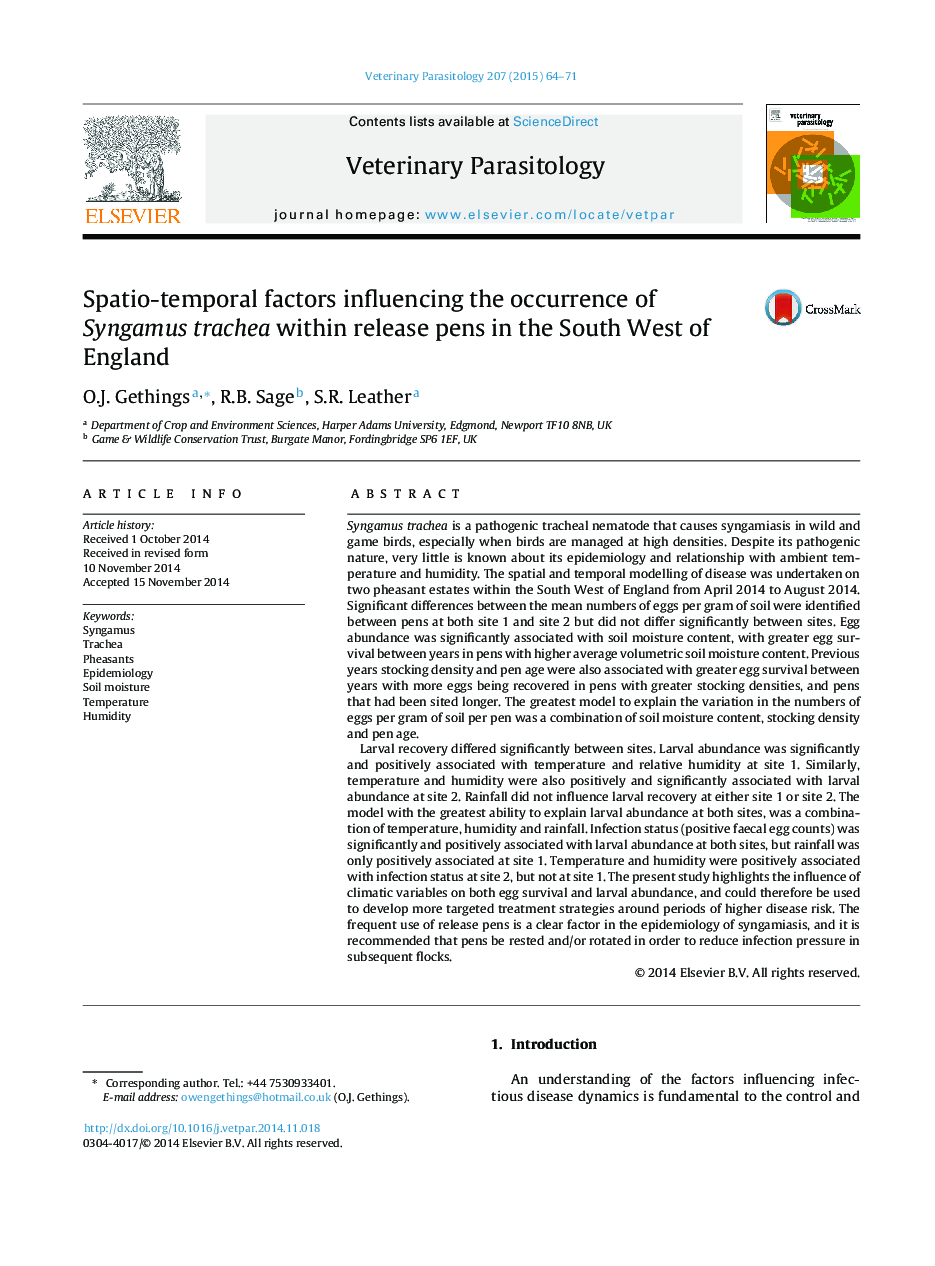| کد مقاله | کد نشریه | سال انتشار | مقاله انگلیسی | نسخه تمام متن |
|---|---|---|---|---|
| 5802869 | 1555677 | 2015 | 8 صفحه PDF | دانلود رایگان |
- An investigation of the epidemiology of Syngamus trachea was undertaken.
- Temperature and humidity strongly influenced larval development.
- Volumetric soil moisture content explained much of the within-site variation in S. trachea eggs per pen.
- Potential to regulate land use to reduce reliance on anthelmintics.
Syngamus trachea is a pathogenic tracheal nematode that causes syngamiasis in wild and game birds, especially when birds are managed at high densities. Despite its pathogenic nature, very little is known about its epidemiology and relationship with ambient temperature and humidity. The spatial and temporal modelling of disease was undertaken on two pheasant estates within the South West of England from April 2014 to August 2014. Significant differences between the mean numbers of eggs per gram of soil were identified between pens at both site 1 and site 2 but did not differ significantly between sites. Egg abundance was significantly associated with soil moisture content, with greater egg survival between years in pens with higher average volumetric soil moisture content. Previous years stocking density and pen age were also associated with greater egg survival between years with more eggs being recovered in pens with greater stocking densities, and pens that had been sited longer. The greatest model to explain the variation in the numbers of eggs per gram of soil per pen was a combination of soil moisture content, stocking density and pen age.Larval recovery differed significantly between sites. Larval abundance was significantly and positively associated with temperature and relative humidity at site 1. Similarly, temperature and humidity were also positively and significantly associated with larval abundance at site 2. Rainfall did not influence larval recovery at either site 1 or site 2. The model with the greatest ability to explain larval abundance at both sites, was a combination of temperature, humidity and rainfall. Infection status (positive faecal egg counts) was significantly and positively associated with larval abundance at both sites, but rainfall was only positively associated at site 1. Temperature and humidity were positively associated with infection status at site 2, but not at site 1. The present study highlights the influence of climatic variables on both egg survival and larval abundance, and could therefore be used to develop more targeted treatment strategies around periods of higher disease risk. The frequent use of release pens is a clear factor in the epidemiology of syngamiasis, and it is recommended that pens be rested and/or rotated in order to reduce infection pressure in subsequent flocks.
Journal: Veterinary Parasitology - Volume 207, Issues 1â2, 15 January 2015, Pages 64-71
